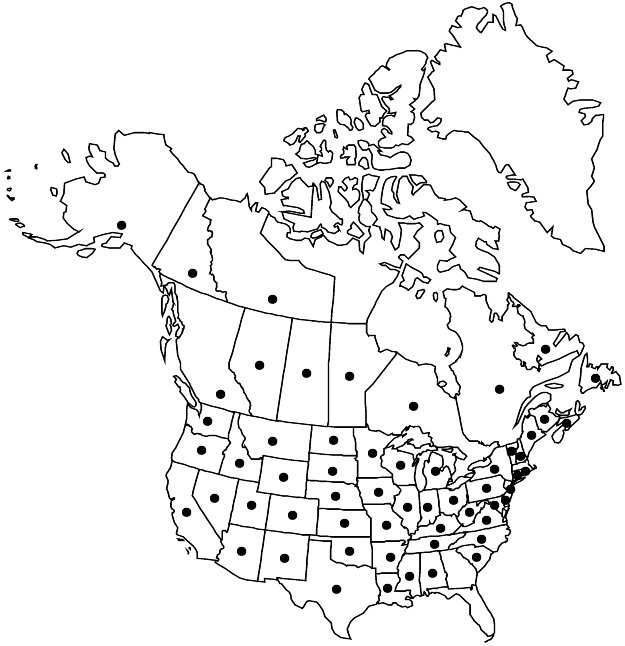Polygonum aviculare subsp. buxiforme
Sida 20: 988. 2003.
Plants gray-green or bluish green, rarely green, homophyllous or subheterophyllous. Stems 1–3, erect to ascending, ± unbranched, 5–15 cm, or numerous, procumbent, mat-forming, extensively branched, 20–70(–200) cm. Leaves: ocrea 3.5–6.5(–8) mm, proximal part cylindric, distal part silvery, relatively persistent, with inconspicuous veins, leaving almost no fibrous remains after disintegrating; petiole 0.3–2(–3.5) mm; blade green or gray-green, lateral veins visible but not raised abaxially, lanceolate to elliptic, oblanceolate, or obovate, 6–30(–45) × 3–6(–13) mm, 2.5–5.6(–10) times as long as wide, apex acute to obtuse; stem leaves 1–2.5 times as long as branch leaves. Cymes mostly uniformly distributed, but also aggregated at tips of stems and branches, 2–6-flowered. Pedicels mostly enclosed in ocreae, 1–2.5 mm. Flowers: perianth (2–)2.3–3.4(–3.6) mm, 0.9–1.3(–1.5) times as long as wide; tube 20–36% of perianth length; tepals overlapping, green with white or sometimes pink margins, oblong, apex cucullate, outer tepals pouched at base; veins branched, moderately to strongly thickened; stamens 7–8. Achenes usually enclosed in perianth, light brown to brown, ovate, 3-gonous, (1.8–)2–2.8(–3) mm, faces subequal, concave to flat, apex straight, coarsely striate-tubercled to obscurely tubercled; late-season achenes common, 2.5–5 mm. 2n = 60.
Phenology: Flowering Jul–Nov.
Habitat: Roadsides, vacant lots, sidewalks, packed and nondrifting sands, borders of marshes and dunes
Elevation: 0-3500 m
Distribution

Alta., B.C., Man., N.B., Nfld. and Labr., N.W.T., N.S., Ont., Que., Sask., Yukon, Ala., Alaska, Ariz., Ark., Calif., Colo., Conn., Del., D.C., Idaho, Ill., Ind., Iowa, Kans., Ky., La., Maine, Mich., Minn., Miss., Mo., Mont., Nebr., Nev., N.H., N.J., N.Mex., N.Y., N.C., N.Dak., Ohio, Okla., Oreg., Pa., R.I., S.C., S.Dak., Tenn., Tex., Utah, Vt., Va., Wash., W.Va., Wis., Wyo.
Discussion
Although apparently it has a North American origin, subsp. buxiforme is considered part of the Polygonum aviculare complex because it intergrades with subsp. aviculare (M. Costea and F. J. Tardif 2003).
Selected References
None.